In the journey to explore Quang Nam, it is almost impossible not to spare a little time to revisit Hoi An, to admire the beauty of the Japanese Bridge. With a history spanning 4,000 years, the Japanese Bridge in Hoi An still retains its original charm, serving as evidence of a glorious and bustling era in a renowned port town during the 16th-19th century.
Table of Contents
Introduction to Hoi An’s Japanese Covered Bridge
Where is Hoi An’s Japanese Covered Bridge located?
The Japanese Covered Bridge is an ancient bridge situated at the beginning of Nguyen Thi Minh Khai Street, Minh Khai Ward, in the historic town of Hoi An, Hoi An City.
The bridge was constructed by the Japanese people, also known as the Japanese Bridge or Lai Kieu Viễn. The name “Japanese Covered Bridge” remains the most common one to this day, as it is designed to resemble a small temple. When tourists visit Hoi An, they can come to explore and admire the bridge and make offerings.
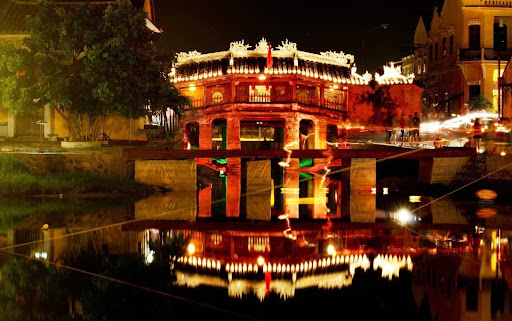
In 1990, the Japanese Covered Bridge was recognized as a national-level historical and cultural monument.
Ticket Prices and Opening Hours for the Japanese Covered Bridge
Regarding the Opening Hours of Hoi An’s Japanese Covered Bridge
- Opening Hours: Morning: 9:00 AM – 11:00 AM,
- Afternoon: 3:00 PM – 10:00 PM
Admission Prices for Hoi An’s Japanese Covered Bridge:
- 80,000 VND per person (Vietnamese visitors)
- 100,000 VND per person (international visitors)
Directions to get to Hoi An’s Japanese Covered Bridge
The Japanese Covered Bridge is known as the first stop in the journey to explore the ancient town of Hoi An. In the ticket-selling area, just a few hundred meters away, you will immediately see the Japanese Covered Bridge gracefully arched over a small branch of the Thu Bon River.
If you are in Da Nang, you can arrange a private car transfer from Da Nang to Hoi An through PrivateCarTransferHoian.com’s, offering fast and convenient services to pick you up from various locations in Da Nang, such as the airport, hotels, train stations, to ensure you reach Hoi An’s Japanese Covered Bridge as quickly as possible.
What is special about the architecture of Hoi An’s Japanese Covered Bridge?
The Temple… But Not for Buddha
The space inside the Bridge Temple is relatively small, and first-time visitors may be surprised that it’s often referred to as the Japanese Covered Bridge, yet it doesn’t have any Buddha statues. This small temple is tucked into one corner of the bridge and features an architectural style influenced by Chinese culture, adorned with intricate decorative motifs. In the center of the temple stands a wooden statue of the Northern Deity Tran Vo, symbolizing prayers for peace and tranquility for the local residents in the vicinity.
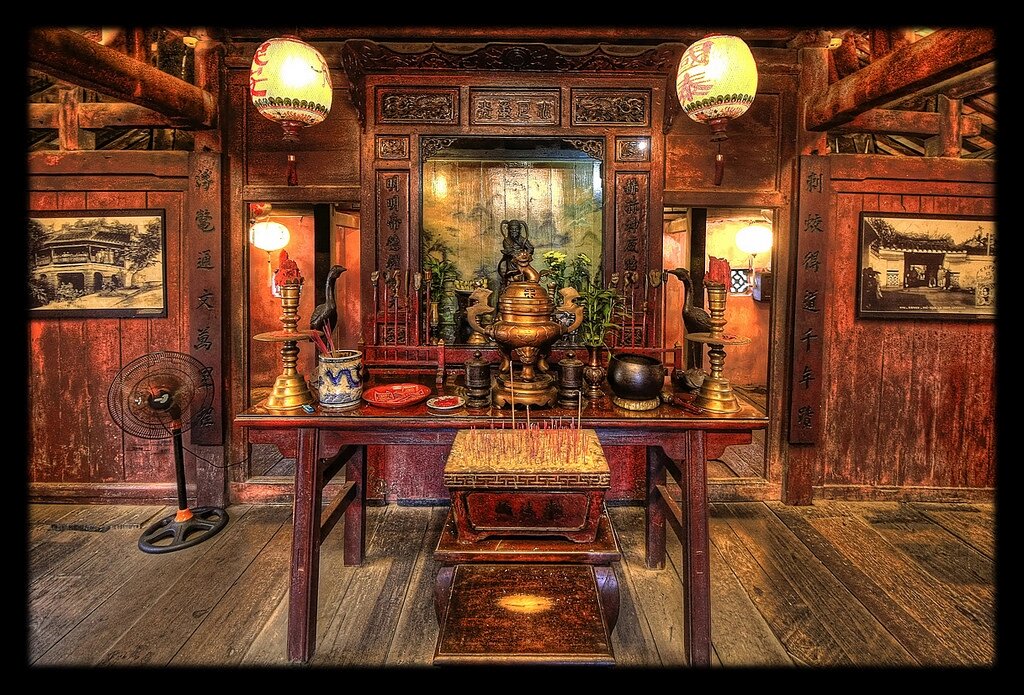
Hoi An’s Japanese Covered Bridge – A Timeless Landmark
Spanning over 4,000 years of history, the Japanese Covered Bridge stands as a testament to the passage of time and bears witness to the economic, political, and cultural transformations in Hoi An. Amidst a rapidly modernizing and sophisticated city, the Japanese Covered Bridge continues to stand, preserving its ancient beauty and serenity.
Built in Japanese Style
Hoi An’s Japanese Covered Bridge was funded and constructed by Japanese merchants around the 17th century, which is why it’s sometimes referred to as the Japanese Bridge. However, when considering the overall structure, you can clearly sense the blending of three cultures: Chinese, Japanese, and Vietnamese, which come together harmoniously to create the Japanese Covered Bridge. The yin-yang-style roof is a common feature in many ancient buildings in Hoi An.

Upon entering Hoi An’s Japanese Covered Bridge, you will immediately be impressed by two guardian statues: the monkey and the dog. These statues are meant to stand guard and protect the bridge from malevolent forces. They are carved from jackfruit wood with exquisite and highly lifelike details, and each one sits atop an incense burner.
The inner columns and pillars of the bridge are intricately and delicately carved, showcasing the aesthetics and religious reverence of the ancient townspeople. This allows you to feel the former hustle and bustle of the area and the deep devotion to the beliefs in the power of the gods who could protect and shield individuals from hardships and malevolent forces.
The Japanese Covered Bridge was once a bustling trading port.
In the 16th and 17th centuries, during the Nguyen Dynasty, Hoi An was chosen as a trading port where foreign merchants converged to exchange goods. With the integration of various cultures, Hoi An grew increasingly lively, with ships coming and going. Historical records indicate that Hoi An was one of the largest trading ports in Southeast Asia at the time.
The Japanese Covered Bridge – A Cultural Intersection
The Japanese Covered Bridge is one of Hoi An’s historical landmarks, which has witnessed the ups and downs of Hoi An’s history and served as a place where Vietnamese, Japanese, and Chinese cultures intersected. Over the years, the bridge has retained the delicate beauty of its unique architecture from that era.
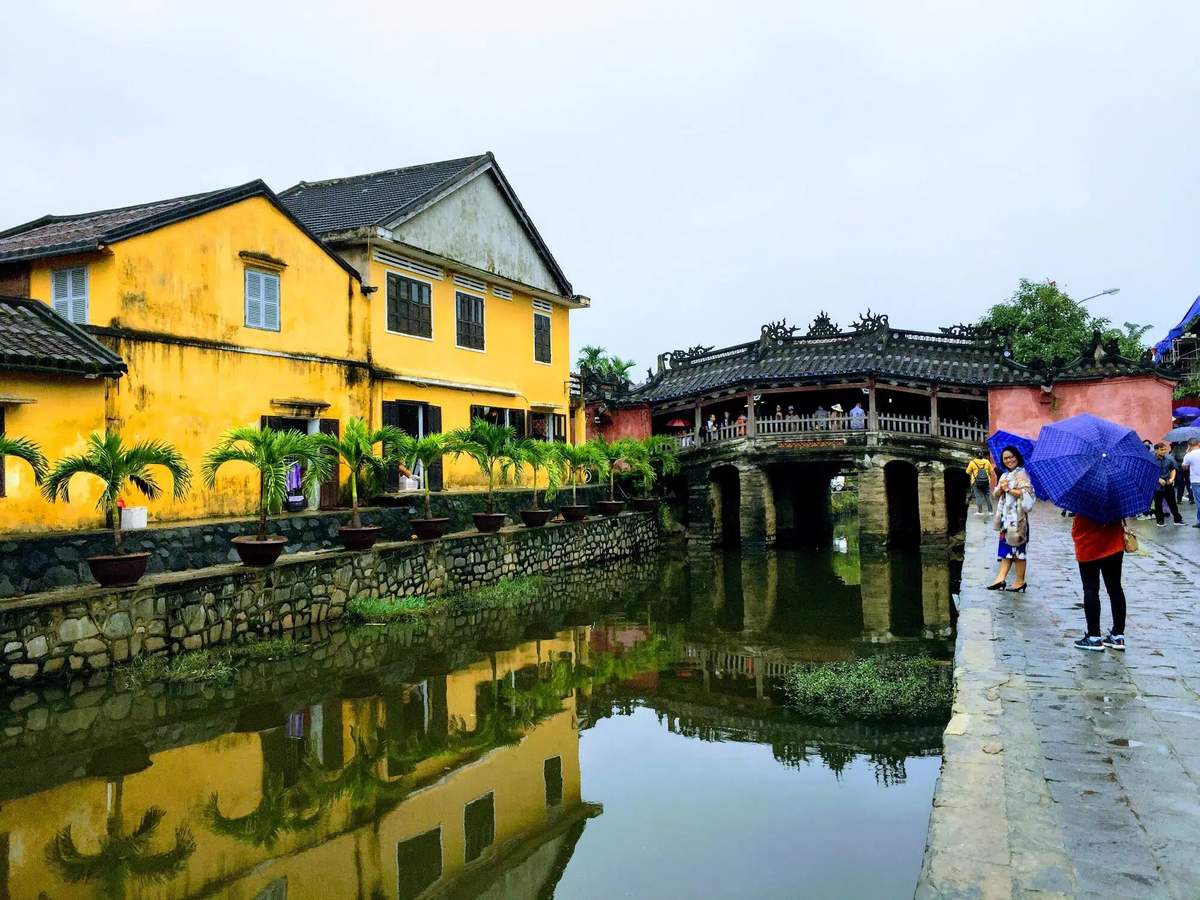
Although constructed by Japanese engineers, there are still elements of traditional Vietnamese architecture in its design. The bridge has a yin-yang roof, a common architectural style in Vietnam. It features a distinctive, arched roof with narrow corridors on both sides for resting. The entire structure is made of wood, and its intricate carvings, combined with Japanese architectural elements, are readily noticeable.
Hoi An’s Japanese Covered Bridge – Featured on the 20,000 VND Note
If you pay close attention, you will notice the beautiful depiction of the Japanese Covered Bridge on the polymer 20,000 VND note of Vietnam. This alone speaks to the immense value and significance of the bridge in both the economic and spiritual aspects of the Vietnamese people.
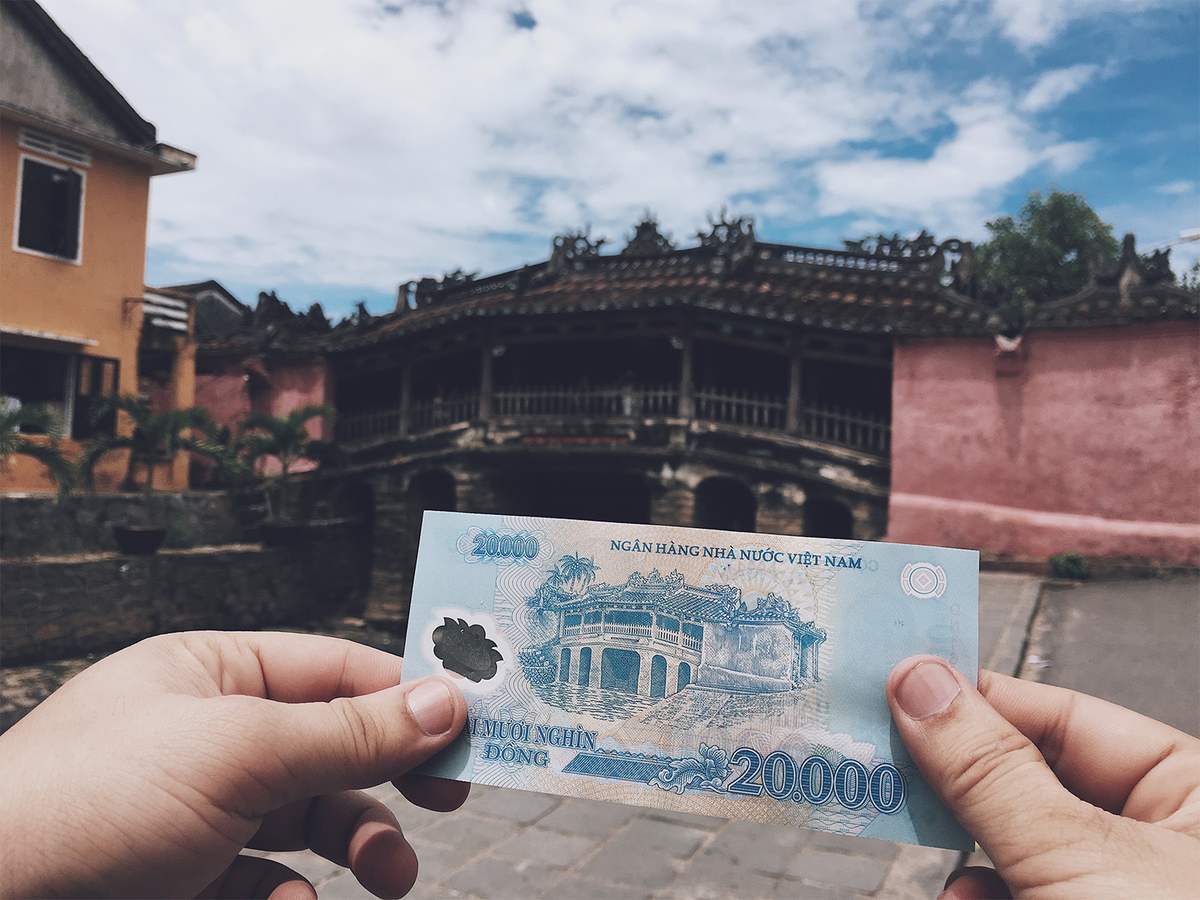
Hoi An’s Japanese Covered Bridge – An Icon of Vietnamese Tourism
In July 2019, Hoi An once again filled us with pride as the image of the Japanese Covered Bridge appeared prominently on Google’s homepage. Prior to this, Hoi An had already achieved the title of “World’s Best City for Tourism,” as voted by Travel and Leisure, a leading American travel magazine.
In addition, Hoi An has earned several other prestigious titles, including:
- One of the Top 10 Most Romantic Cities in the World.
- One of the Hottest Asian Destinations for Memories.
- Hoi An being the Most Beautiful Film Set in the World.
Tourist Attractions Near Hoi An’s Japanese Covered Bridge in the Ancient Town
Continuing your journey to explore Hoi An’s Japanese Covered Bridge, you certainly shouldn’t miss the nearby attractions. To truly experience the serene and antique charm of Hoi An, it’s not enough to visit just the bridge. Many historical sites and beautiful scenes await your exploration.
Hoi An Ancient Town
While the Japanese Covered Bridge is nestled within the heart of the ancient town, it’s a great loss if you only visit the bridge and don’t delve deeper into the town itself. The Hoi An ancient town is, in fact, a preserved historical urban area. As mentioned earlier, it was a renowned trading port in the 16th and 17th centuries. Covering an area of just about 2 square kilometers, tourists can comfortably stroll around without getting tired.
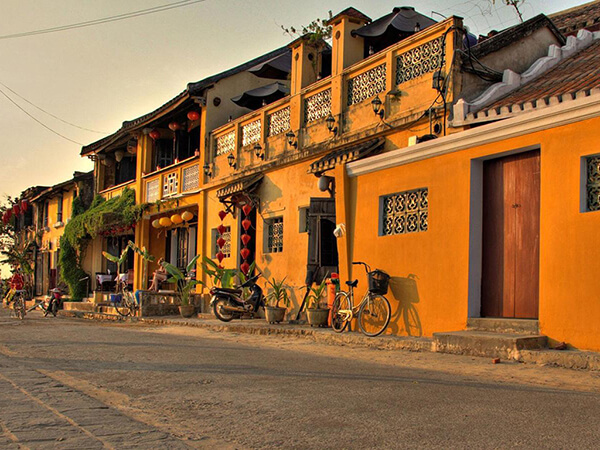
Inside the ancient town, ancient houses seem to bear the imprint of time. Nestled among the moss-covered roofs are walls that have aged gracefully. According to statistics, there are currently a total of 1,360 historical sites in Hoi An’s ancient town, including 1,068 ancient houses (among them, Tan Ky House is 200 years old), 44 ancient tombs, 38 clan temples, 43 shrines, 19 small and large temples, 23 communal houses, 11 wells, and, of course, the Japanese Covered Bridge.
Hoai River Boat Ride
Hoi An has truly earned its place among the top 10 most romantic destinations in the world. It’s not just the moss-covered tiled roofs, the golden-hued walls, or the charming paper lanterns; taking a boat ride on the Hoai River and releasing floating lanterns are also moments of great romance and delight.
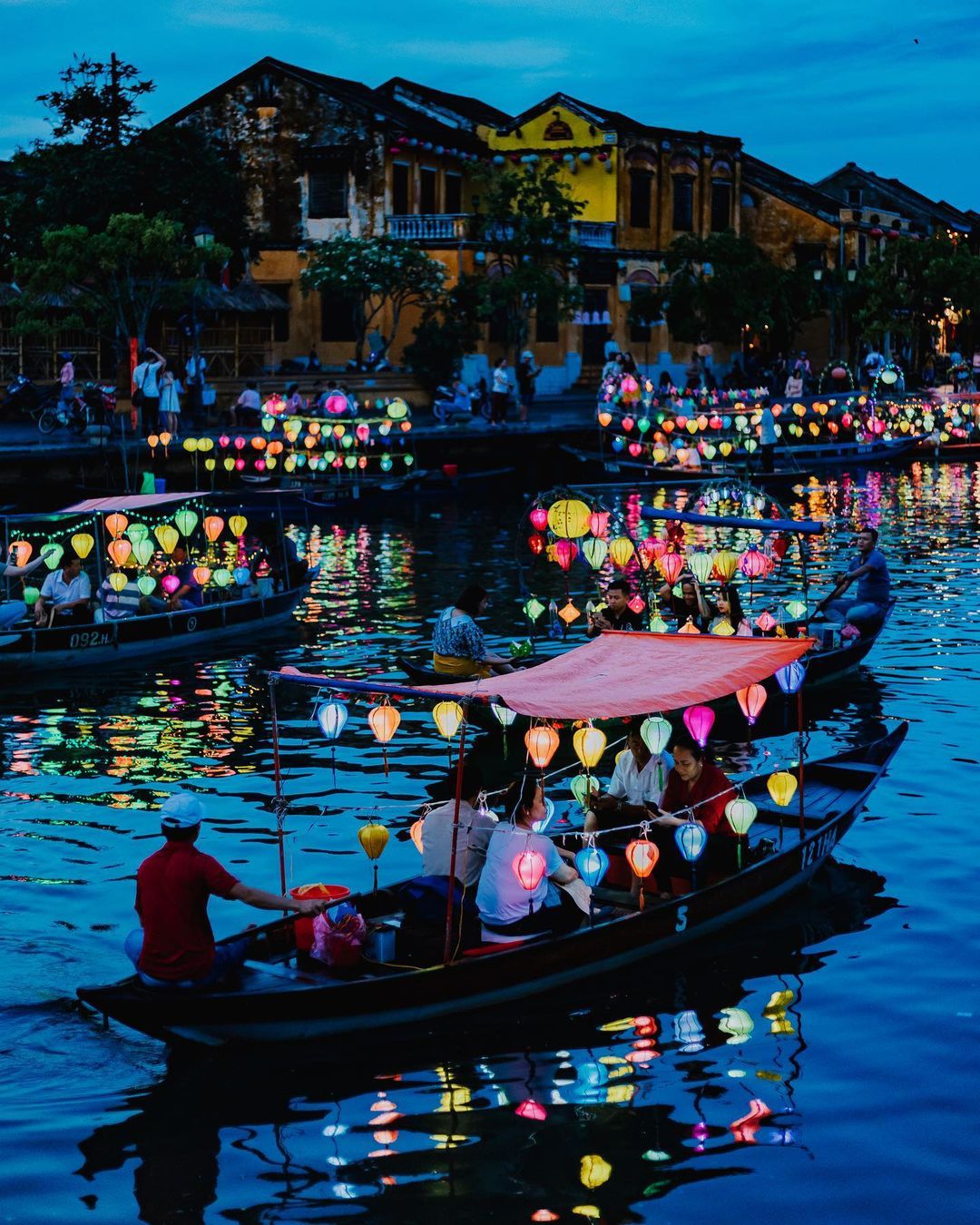
Thanh Ha Pottery Village
With a history spanning 500 years, Thanh Ha Pottery Village is known as a traditional craft village in Hoi An. Even after a long time, nearly fading into obscurity, Thanh Ha pottery still exists, producing beautiful and delicate ceramic products for locals and neighboring areas like Quang Nam and Da Nang.
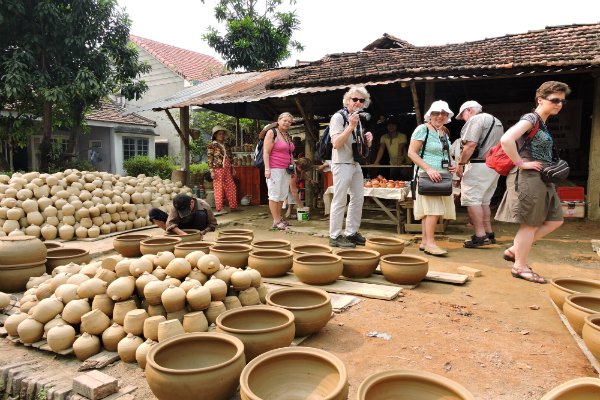
Things to Note When Visiting Hoi An’s Japanese Covered Bridge in Quang Nam
When traveling to Hoi An’s Japanese Covered Bridge, tourists should keep the following points in mind:
- Ticket Prices: Tickets cost 80,000 VND per Vietnamese visitor and 120,000 VND per international visitor for access to the Japanese Covered Bridge, the Old Town, traditional art performances, museums, and more.
- Group Tours: If you are part of a large group, consider hiring a guide who can introduce you to the unique architectural features and share stories of Hoi An’s history.
- Timing: Hoi An’s Japanese Covered Bridge can get quite crowded, so it’s advisable to visit in the morning around 9 AM or in the afternoon between 2 PM and 3 PM when it’s less crowded.
- Respectful Behavior: Since the bridge is a spiritual and religious site, visitors should be respectful. Avoid pushing or speaking loudly, and dress modestly when entering the temple.
- Enjoy Local Cuisine: Don’t forget to savor the local specialties near the Japanese Covered Bridge, such as Cao Lau, Mi Quang, Com Ga, Banh Xeo, Phuong Bread, and Che Thap Cam.
Hoi An’s Japanese Covered Bridge is a must-visit destination when you come to Hoi An. It is an architectural masterpiece that is hailed as the symbol of Hoi An, vividly representing the spiritual life and beliefs of the people in the ancient town in days gone by.



